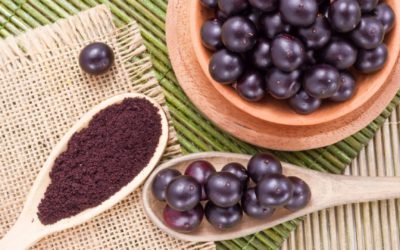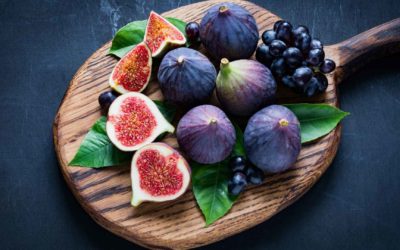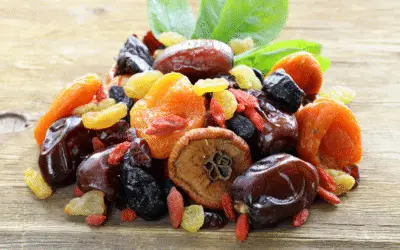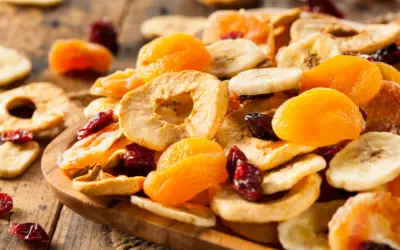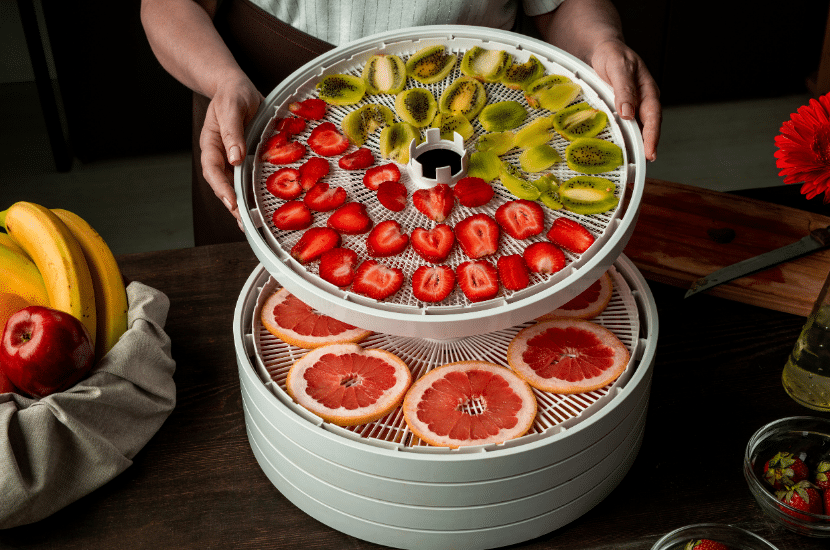
Dehydrator Vs Oven For Dried Fruits
Dehydrated fruits are a popular snack to eat on the go, as they are not only convenient, but they are also healthy and nutrient dense. Find out more about how to make your own dehydrated fruits using a dehydrator machine, so that you do not have to wait all-year round for your favourite fruits!
Benefits of dehydrated fruits
Dehydrated fruits often are packed with more nutrients, since most of the water content has been lost in the drying process. Hence, what remains are the vitamins and nutrients of the fruit. You may read more about the benefits of dried fruits in the article titled, “Is Eating Dried Fruit Healthy As Healthy As Fresh Fruit?” in our blog. Dehydrated fruits also have a longer shelf life than fresh fruits, which means that you do not have to worry about your fruits spoiling. They are also more portable and lighter, hence people are getting more interested in how to dehydrate their own fruits.
Difference between using an oven and a dehydrator
In our previous article, “How To Make Your Own Dried Fruit With An Oven”, we explored drying fruits using an oven, for those who do not have a dehydrator. Let us now compare the oven with a dehydrator.
Temperature control
A dehydrator comes with an in-built fan, multiple trays and a heat source. The fruits are also dried and dehydrated with a heated airflow system. Some models also provide a temperature adjustable feature, which helps you to set the optimal temperature and timer needed to maintain and preserve the beneficial enzymes and nutrients found in the fruits. It also helps to prevent overheating.
For the oven, temperatures are usually very high, and the temperatures are not low enough. Hence, you would have to constantly monitor your oven to prevent overheating and charring the dried fruits.
Number of racks
Dehydrators usually contain more racks than ovens, allowing a greater quantity of fruits to be dehydrated. This also saves on electricity cost.
Appearance and texture
The fruits that are dehydrated using a dehydrator have more crunch or snap, compared with fruits dehydrated in the oven, which are more “flexible” and “bendy”.
The fruits that are also dehydrated using a dehydrator also have a lighter shade than those dehydrated using an oven.
Best fruits to dehydrate with a dehydrator
Bananas
Serving: One banana gives you half a cup of dried bananas
Steps:
- Peel the bananas and slice them into 0.635cm for a thin slice or 0.95 cm for a thick slice. Lay the slices on the dehydrator tray evenly.
- Set the temperature to 57 degrees and dehydrate for around 8 to 12 hours.
- They are done when they are not malleable. When bent, they should come to almost a breaking point.
Tip:
- To prevent discoloration, soak the bananas in a apple cider vinegar solution for around 1 minute. The ratio of apple cider vinegar to water should be 1:4.
- You can add flavours to the banana, by just sprinkling them directly onto the bananas on the tray. You do not have to add too much as the flavour comes out strong after the dehydration process.
Strawberries and Blueberries
Serving: 454 grams of fresh strawberries fills up a 473ml jar of dried strawberries. 510 grams of blueberries fills up a 226 ml jar of dried blueberries.
Steps:
- Set to a low temperature of 46 degrees so that the fruits do not become burnt.
- Dehydrate for 8 to 18 hours.
- They are done when you cannot squeeze them that much.
Pineapples
Serving: One large pineapple fills up two 236.5 ml jars of dried pineapples.
Steps:
- Slice off the top and bottom of a pineapple. Let the pineapple stand and remove the skin, leaving behind the yellow flesh.
- Cut the pineapple into four from top to down. Remove around 14.7 cm of the core from each quarter.
- Slice the pineapple into 7.39cm for a thin slice and 11cm for a thicker slice.
- Set the dehydrator to 57 degrees.
- Dehydrate for 12 to 18 hours.
- They are done when you cannot squeeze them that much.
Grapes
Serving: 453.6 grams of grapes fills up to 473 ml jars of raisins. The quantity also depends on the size of grapes used.
Steps:
- If the grapes contain seeds, remove the seeds.
- Set temperature of the dehydrator to 57 degrees, the temperature of “fruit” on most dehydrators.
- Dehydrate for 24 to 48 hours.
- They are done when you cannot squeeze them that much.
Tips:
- You can accelerate the drying process by increasing the temperature to 63 degrees for the first 12 hours. After, lower it back to 57 degrees to prevent over-drying.
- You should dehydrate for the maximum duration of 48 hours so that you can keep these fruits for several months.
- Move the grapes around every 8 hours to prevent that juices that seep out from sticking onto the tray. Red grapes tend to have more juices than green grapes.
Peaches and Persimmons
Serving: One large fruit fills up a 236.5 ml jar of dried fruit.
Steps:
- It is up to your preference to remove the skin or not.
- Cut the fruit in half and remove the seeds. Slice them into 0.635cm for a thin slice or 0.95 cm for a thick slice.
- Set the dehydrator to 57 degrees.
- Dehydrate for 12 to 18 hours.
- They are done when you cannot squeeze them that much.
Storage
The dehydrated fruits are done when they are totally dried, and anywhere from being bendable to being brittle and crisp. Keep them in wide-mouth mason glass jars for easy retrieval of the fruit. Store them in a cool, dry place. Shake the containers after a few days to ensure that all moisture is lost. Your dried fruits can last several months if kept properly.
Conclusion
All in all, dehydrators are more energy and time saving, as well as nutrient conserving. They are also a good investment if you are into dehydrated fruits for the long haul. We hope that you have enjoyed reading this article, and we wish you a fun time dehydrating your fruits!

